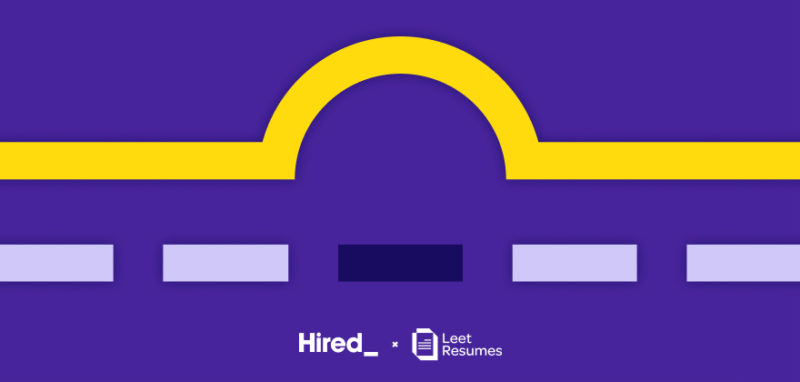
Is It Time to Quit Your Job? How to Leave Without Burning Bridges
It’s important not to burn bridges when you quit your job, even though leaving a job can be exciting and exhilarating. It’s natural to mentally check out, especially when you have a new job waiting for you. However, it’s important to remember that the professional world is a small one, and you don’t want to burn bridges with your old employer, colleagues, or direct reports. Building positive working relationships is key to success, and you never know when you may need a reference or future connection. So, how can you quit your job without burning bridges? Here are some tips to help you make a smooth and positive transition.
1. Communicate appropriatelyThe first step in leaving your job gracefully is to communicate the news appropriately. In most cases, it’s best to tell your boss before anyone else in the office, even if you’re close with your coworkers. You don’t want your boss to hear the news through the grapevine, as this can erode their trust in you. Once your boss knows, ask if there’s a preference how to communicate it to your team. Some managers may prefer to tell the rest of the team themselves, while others will want you to set up conversations with your colleagues. Regardless of the situation, ask to make sure you don’t step on any toes.
2. Keep it positiveIt’s important to stay positive during your last few weeks at a company. Avoid bad-mouthing, as this can leave a lasting impression of you as someone who complains or gossips a lot. Instead, focus on the positives. If people ask why you’re leaving, talk about the new role or company you’re moving to and why you’re excited to join.
The same applies to your exit interview. Your approach should be the same as if you were staying at the company. Don’t use your departing words as a way to say things you couldn’t while working there. It’s okay to offer constructive feedback, particularly if someone asks for it, but keep it light and friendly. This is a great opportunity to practice empathy.
3. Make the transition smoothWhen you quit your job, it’s important to give your soon-to-be former employer enough notice, as well as to help make the transition as easy as possible. You should plan to give at least a few weeks’ notice, and it’s not a bad idea to double-check your employment contract, as most will include a minimum number of weeks or months. Make sure you don’t sign a contract or commit to a certain start date for your new job without first agreeing on an appropriate transition period.
Note for Sales and Customer-Facing Roles
Sometimes, a company will decline your notice, and in some cases, dismiss you upon resignation. If you work with customers, customer data, or other sensitive areas, some companies choose to do this. It’s highly unlikely they mean any offense. What’s likely is someone else chose to burn bridges. They may have had a bad experience with a former employee and created this policy as a result. In any case, be prepared to go the day you give notice, especially if you work in these types of departments.
Shepherd your Team
If you manage a team, this could easily be the most difficult part of moving on, and your employer will likely be concerned with team morale once you depart. If they’re not hiring an immediate replacement, another manager may be asked to “adopt” all of your team members. They may be spread amongst teams, or they may go some time without a dedicated manager.
Whatever the case, do everything in your power to ensure each team member continues to be happy in their role and feels the same amount of potential about their career progression after you leave. Your team members will appreciate it, and the company will be grateful you’ve done what you can to keep their employees happy.
You may be asked to assist in hiring your replacement. You may be asked to document processes, make introductions to suppliers, partners, or anyone external you work with, and any other handover activities relevant to your role. While your heart may not be in it, complete these tasks thoroughly and without dragging your feet. A clean handover leaves a better lasting impression on not only your manager but also everyone you work with.
4. Ask for feedbackAs you approach your last day, it’s important to ask for feedback on your time at the company. Even if you’re leaving on good terms, it can be difficult for people to share constructive criticism with someone who’s already leaving. However, it’s a good idea to ask for feedback on your performance and any areas for improvement.
Actively listen if someone gifts you with meaningful feedback. Take notes if needed. This will help you to grow and develop in your new role and show your former employer that you value their input.
5. Stay in touchFinally, don’t forget to stay in touch with your former colleagues and manager after you leave. Even if you’re starting a new job and your schedule is packed, it’s worth taking the time to send an occasional email or connect on social media. This will help you to maintain a positive relationship with your former colleagues and keep you in the loop about any future opportunities.
Conclusion: you may quit your job, but not being a decent personAccording to federal data, about 50.5 million people quit their jobs in 2022. Leaving a job can be an exciting but stressful time. It’s important to remember that quitting your job doesn’t mean you have to burn bridges with your former employer, colleagues, or direct reports. By communicating the news of your departure appropriately, keeping things positive, and making the transition as smooth as possible, you can leave a positive lasting impression on everyone you work with. By asking for feedback and staying in touch, you can continue to grow your network and your career even after you’ve moved on to your next opportunity. Remember, the working world is a small one, and maintaining positive relationships is always a good idea.
Ready to join a new team? Create a free profile on Hired and let us help you find the tech role of your dreams!Originally published July 24, 2019, revised May 2023.
Related blog posts

How to Handle an Employment Gap on Your Resume (Flip the Script!)
You’re not your work history Addressing an employment gap on a resume is one of the most...

Part of a Layoff? Steps Jobseekers in Tech & Sales Need to Take First
Chapter 1 of a series to help jobseekers bounce back better than ever (or to feel better prepared...

Build Confidence and Take Control of Your Tech Job Search Series
The process of finding a job often feels overwhelming. It’s difficult to determine the best avenue...

Is My Job Too Much Work for One Person?
4 Strategies to Address Feeling Overwhelmed at Work Whether you work for a startup or...

6 Common FAQs from Jobseekers: Answers to Help You Prepare for & Dive Into the Job Search
How Hired Helps: Ask Me Anything: Pathrise Jobseekers asked and we answered! Hired teamed up...

Is My Job Too Much Work for One Person?
4 Strategies to Address Feeling Overwhelmed at Work Whether you work for a startup or...

